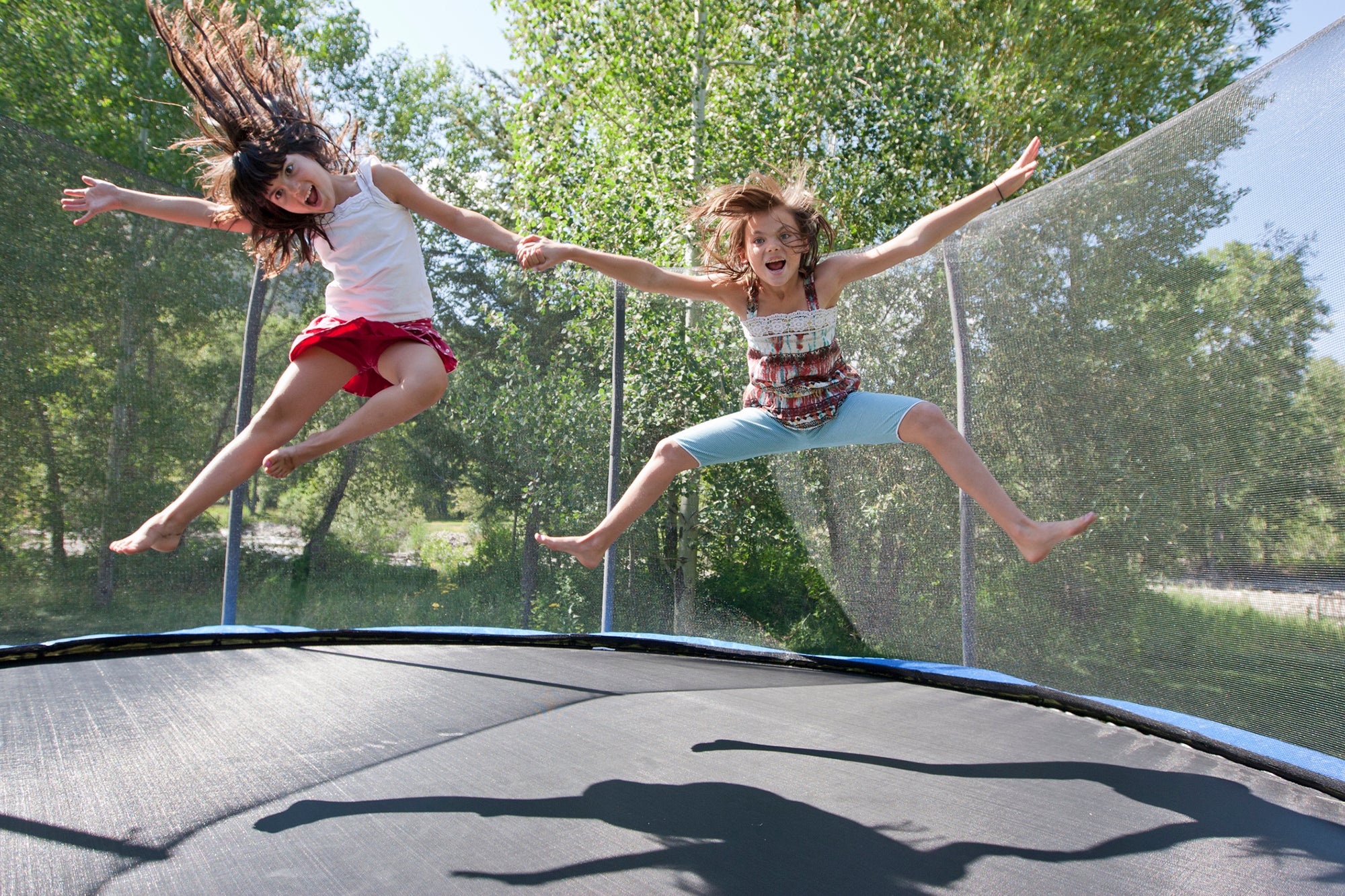Trampoline Fun How to Play It Safe
July 2, 2022
By: WakeMed Health & Hospitals
Categories: Children's, Urgent Care
Every year, thousands of children and adults are injured on trampolines, from falls, collisions with other jumpers and ill-fated flips or other stunts gone wrong. Some slips and slides lead to bruises, strains and scrapes (and maybe a few tears), but trampoline accidents can also cause broken bones, concussions and head and neck injuries. Some of these injuries require hospitalization or surgery. Some are fatal.
These days, most trampolines are sold with protective netting, which does help prevent some of the riskiest falls. But the American Academy of Pediatrics (AAP) still stands by its recommendation that trampolines should only be used in supervised training programs for gymnastics, diving or other competitive sports. Not at home, not in gym classes, not on playgrounds. Not full-sized trampolines. Not mini trampolines.
Seems like they aren’t going to change their minds. No matter how many times the kids ask.
Pool Rules Apply
If you must trampoline, or if you already have a trampoline, it’s best to treat the trampoline — and trampoline rules — as stringently as you would treat a pool. The potential injuries, after all, are just as serious.
Set up for safety: Install the trampoline on level ground, away from trees, fences or other structures. Never place a trampoline on concrete unless you have safety mats all around the trampoline. Don’t use the trampoline until the safety net around it has been installed and the springs are covered.
Check the equipment: Anytime you plan to use the trampoline, first make sure there are no leaves, water or anything else on the trampoline that could cause feet to slide. Make sure there’s nothing underneath the trampoline. Check the net and protective padding regularly — when any part is damaged, it should be repaired or replaced before the trampoline is used again.
Set the rules: Make sure your kids and their friends — and your friends — know and agree to the rules before the jumping gets going. Here is a solid set:
- Adult supervision is required at all times.
- Suit up! All jumpers must wear athletic clothing — no big buttons, bows, accessories or anything else that could get caught in the equipment. Empty all pockets, and take off socks and shoes.
- No kids under age 6 on the trampoline. Small children are much more likely to get seriously hurt than bigger children.
- Only one jumper at a time. Again, maybe a bummer, but most trampoline injuries occur when multiple kids are jumping at one time. It is especially dangerous to have kids of different ages and sizes jumping together.
- Jump smart! Always jump in the center of the trampoline and never jump off a trampoline. No somersaults, stunts, or flips — those shenanigans are what most frequently cause cervical spine injuries that create permanent damage.
Enforce the rules: Yes, even if that makes you the killjoy. Stop your kids (and their friends, and your friends) if they jump too high or start doing stunts.
Close the trampoline: After using a trampoline, remove any ladders to make sure small children can’t access it.
Check your coverage: Before you start having other people over for a jump session, check your home insurance. Adult supervision doesn’t guarantee an injury-free experience, and because of the overall risk, many home insurance policies don’t cover trampoline-related injury. You might need to add a rider to your policy to cover your trampoline.
Diversion Tactics
Even the AAP will probably admit that trampolines can provide a lot of summer fun for families, but before you invest in one, consider what your comfort level is with the risks owning a trampoline involves. Remember that there are lots of ways to get out and enjoy some fresh air and healthy movement. And if you’re going to take the leap, make sure you’re prepared from the first jump.
Sources:
https://wakemedvoices.org/2013/05/keep-bouncing-trampoline-bounce-house-rules-for-fun/
https://www.healthline.com/health/childrens-health/trampoline-safety-22…
https://www.mayoclinic.org/healthy-lifestyle/childrens-health/expert-an…
https://www.parents.com/kids/safety/outdoor/are-trampolines-safe/
https://www.verywellfamily.com/are-trampolines-safe-1256997
https://www.healthychildren.org/English/safety-prevention/at-play/Pages…